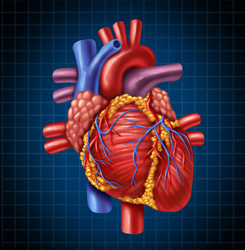Bioactive implants in cardiac regeneration
Heart failure is the end-stage of cardiovascular diseases. The leading cause is the presence of a large scar due to myocardial infarction. Therapeutic strategies that limit post-ischaemic remodelling in HF may prevent ventricular dilatation and maintain the structural support for effective cardiomyocytes contraction. Current treatments under development utilise myocardial cells or stem cells that are grafted onto infarcted ventricles for the generation of new myocardial tissue. Most of the implanted cells die soon after transplantation due to the conditions (i.e. low oxygen levels) they experience in the host ischaemic tissue. The main goal of the EU-funded 'Regeneration of cardiac tissue assisted by bioactive implants' (RECATABI) project was to develop new cellular therapy for myocardial infarction scar healing. Team members aimed to develop a bioactive implant (BI) prototype for the delivery of stem cells to the damaged heart tissue using rodent and sheep animal models. Scientists developed a BI by combining the self-assembling peptide nanofibres, the elastomeric membranes and the adipose tissue-derived stem cells (ATDSCs). This bioactive patch carrying stem cells demonstrated good cell survival, cell distribution and proper delivery of the cells into the ischaemic tissue. Proof of concept was done in a small animal model (mouse) of infarct, and in a large animal model (sheep) of infarct. Migrating implanted cells were able to integrate into the cardiac tissue in the mouse as well as in the sheep model. This was analysed by using pre-cardiac stem cells carrying reporter genes (i.e. luciferase) under the transcriptional control of a specific cardiac marker promoter. Moreover, large animal studies demonstrated that 6-month treatment post-infarct with BI was sufficient to reduce scar tissue, restore ventricular size with functional improvement in ejection fraction. The consortium successfully protected their discoveries and platform development through a patent (USSN 61/327,864). Several manuscripts were published and more are in preparation. Project members participated in several international and national meetings, congresses and symposiums during the three years of the project. RECATABI was able to develop the platform for a novel therapeutic option for patients with chronic myocardial post-infarction scars. There is a high expectation that in human patients the novel BI would provide better quality of life and longer life expectancy.







